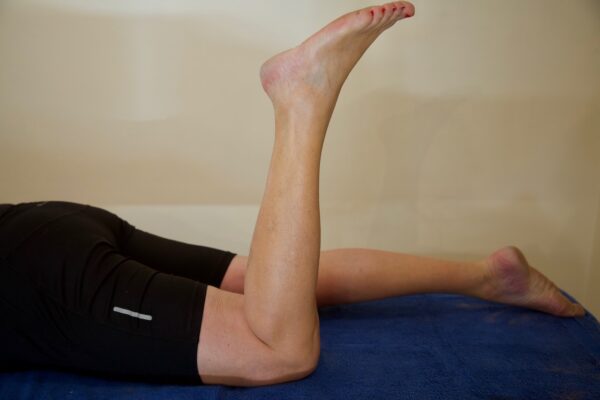Immediately post op
1st Day for the first few days it is important to keep your feet moving up and down to prevent blood clots and also to take deep breaths to prevent chest problems.
1. Deep breathing– take in a large breath hold to a count of 3 then release. Repeat 4 times then have a rest. Then repeat again.
Do this every hour
2. Circulatory exercises
Working your calf muscle helps pump the blood back up the leg.
Move your feet up and down– Point your toes down with the ankle moving down as well then pull up. You can do this lying or in sitting and with your feet on the ground like a treddle motion.
Then Circle your ankles in both directions.
Do at least of 20 of each exercise.
Try and do these every hour or so while awake
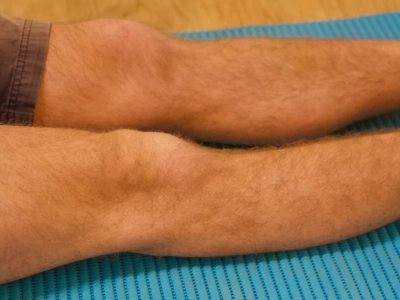
Exercises for your new knee
1. Static Quads- This works your main thigh muscle on the front and straightens your knee
Sit or lie with your leg straight out in front of you. Press your knee flat in to the bed and lift your toes up towards you. Hold for 5 then release
Repeat 10 times.
2. Knee extension over a roll-
Put a rolled towel under your knee- keeping the knee on the roll lift the lower leg to straighten the knee x 20
The larger the roll the easier the exercise. So progress to a small roll.
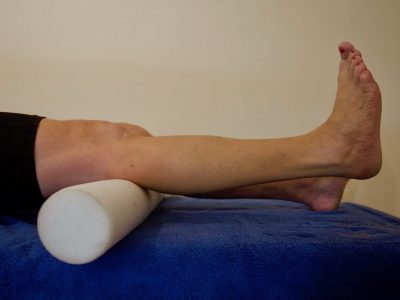
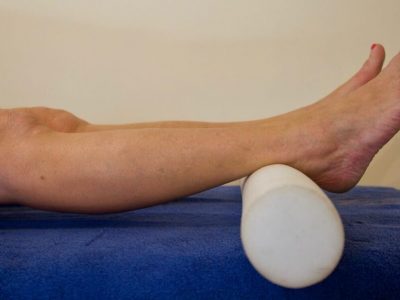
3. Roll under Heel- Extension
Put the roll under the heel and push your knee down flat.
Then bend a little again and push down x 10. This gives you extra momentum to force the knee into the full extension essential to allow you to walk properly.
It may take a while to get this back if you have been walking around with a stiff, flexed painful knee for some time.
Work hard at this as it is absolutely key to achieve the best outcome from your surgery.
4. Straight leg raise
Sit or lie with your leg straight out in front of you. Squash your knee down flat and tense your Quadriceps muscle. Then lift your leg approximately 2 inches off the bed keeping the knee locked at all times.
Repeat x 10 and build up to 20
If your knee bends as you lift the leg, this is called a lag and means the exercise is less effective and may be that you are not ready. Work harder at Exercise 1 before you resume.
Also work at extending the knee in the chair.
See below
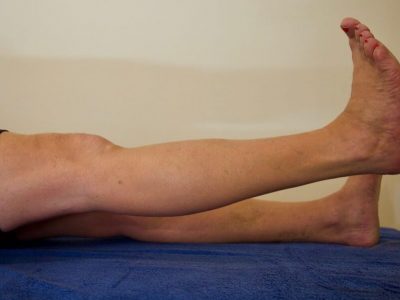
5. Static hamstrings
Sit or lie with your leg straight in front of you.
Pull your heel into the bed by tightening the muscle at the back of your thigh.
Hold for a slow count of 5 and repeat x 10
6/Static gluts/ Bottom clenches
Tense your bottom muscles and hold for a count of 10.
Repeat 10 times.
Then place a rolled towel between your thighs. Squeeze your buttocks, straighten your knee and squeeze the rolled towel. Hold for 10 secs and slowly release. Repeat x 10
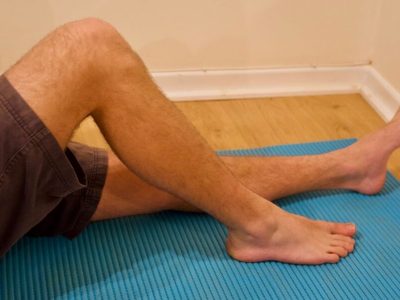
7. Knee flexion on the bed
Sit with your back supported or lie flat.
Bend your knee up towards you by sliding your foot towards your bottom and then slowly lower it back down.
If this is hard on the sheet you can put something slippery like a plastic bag or tray under your heel, or support your thigh by making a sling from your towel to help you control the movement.
Repeat x 10
Chair Exercises
Once you are out in the chair you can start these
1. Knee Extension
Sitting in the chair or on the edge of the bed
Place a rolled up towel under your knee.
Straighten your knee, lifting your heel off the floor and trying to lift it so you can lock your knee straight
Hold for a slow count of 10
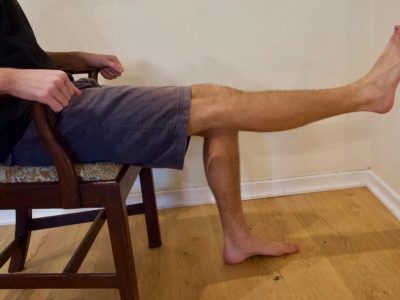
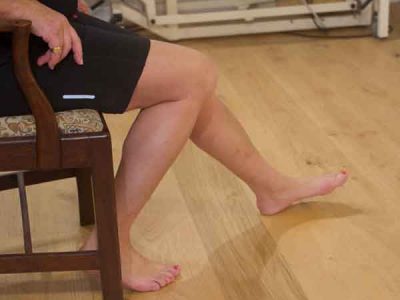
2. Knee flexion in sitting
Sitting on the edge of the bed or in a chair.
With your foot on the floor bend the knee as far as possible.
Hold for 2-3 seconds then relax.
Repeat x 10
You can begin to walk with a frame or crutches once you have adequate knee control. The physiotherapist will help you with this.
Once safe on crutches/sticks and able to do the stairs you will be discharged. This can be as early as day 2 or 3 post-op but this will vary depending on your recovery.
Once you are home – The work continues
Work hard and regularly at the early exercises as they get easier with time and persistence. Do not worry if your knee stiffens up at rest this is normal at this stage.
Make sure you take enough pain medication to allow you to do the exercises. Regular pain medication is the best way to control the pain.There is no reward for being brave and the exercises are extremely important to get the best result from your surgery.
From Discharge – 2 weeks
Once home you must continue with the exercises you have been shown in hospital.
Be aware now that you are home you may feel more tired, this is normal and may take a few weeks to go away. You may still need to rest for part of the day.
You will gradually be able to progress your exercises to ones suggested below
1. Assisted knee bend in sitting
Sit in a chair, bend the operated leg as far as you can.
Cross the good leg over the front of the operated leg. Give a gentle push with the good leg to increase the bend.
Hold for 2-3 seconds.
Relax, repeat 10 times.
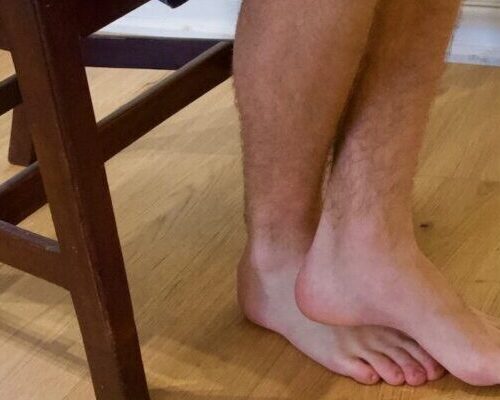
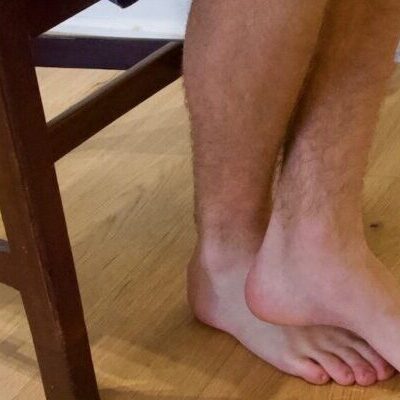
2. Resisted exercises in sitting
In sitting, cross your legs at the ankle with the operated leg underneath. Use the top leg to resist as you straighten your knee.
Once the knee is straight, swap legs so that your operated leg is now on top.
Bend your knee providing resistance with the underneath leg.
Repeat x 10
3. Flexion stretch-
Sit in a chair and bend your knee as far as possible.
Have someone block your foot with theirs or yours or use something solid such as the wall.
Gently slide forward in the chair to increase the bend in the knee.
Hold for 2-3 seconds. Repeat 10 times.
4. Passive hyperextension to regain full movement-
This exercise is very good if your knee does not straighten fully because the muscles and capsule behind the knee are too tight.
Sit in a chair and place the heel of your operated leg on a stool or chair with the knee unsupported. Push down gently with you hand on the knee. Hold for 10 minutes or as long as tolerated.
Another alternative/ addition is to sit with the leg straight and a rolled towel under your ankle and allow the unsupported back of the knee to stretch with the aid of gravity. Try and keep this there for 10 mins or for as long as you can tolerate
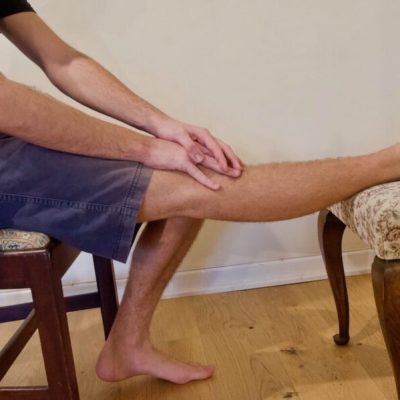
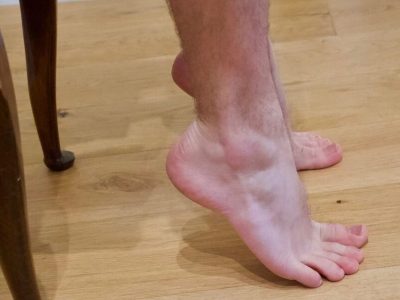
5. Calf pumps in sitting
While you are sitting do not forget to keep those calves pumping.
This is very important to prevent excess swelling and clots in the leg.
This exercise can be performed as often as possible
Knee exercises in standing
These can be done holding on to something solid such as a kitchen top, mantlepiece or solid armchair.
1. Heel raises in standing- Go up and down onto tiptoes x 10 Build up to 20
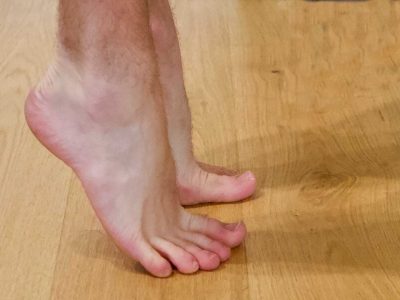
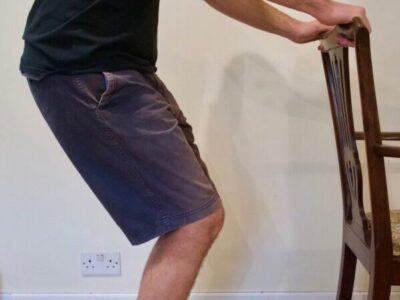
2. Half squats
Stand and hold onto something solid, then bend both knees working together.
Go as far as you can comfortably and safely then stand upright again.
Do x 10. Build up to 20
3. Knee flexion in standing
Hold onto a solid support and then bend the knee behind you, lifting the foot off the floor as far as you can to try and touch the back of the thigh x 10
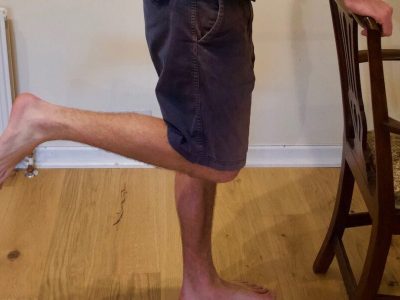
From 2-3 weeks
Once the clips have been removed or the wound has healed if glued or sutured you may start to massage the scar if you wish, this will help loosen and soften the scar.
Massage the scar with your thumb, making small circular movements along the incision.
You can use any natural un-perfumed cream such as body lotion, vitamin E cream, cocoa butter or Bio-oil.
It is also very helpful at this stage to move your kneecap both up and down and side to side with your hand while your knee is straight and totally relaxed. Place your fingers on the top and bottom borders of the kneecap and gently tilt it up and down. Then move your fingers to each side and move the cap from side to side.
By the end of week 2 you should be comfortable and confident walking around the houseand will probably be using only 1 crutch/stick indoors.
If you haven’t walked outside the house you should be able to do so now.
Start by walking a few minutes in one direction and then back. Keep to sticks or crutches outdoors until you can walk without a limp.
Gradually increase the distance you walk each day.
How to tackle kerbs with crutches-
When going up and down the kerb place both crutches down first, then the operated leg followed by the non-operated leg.
Going up the kerb, put the non-operated leg first followed by the operated leg and then the crutches ( exactly the same as you would do for stairs/steps)
See video how to do stairs.
Walking upstairs
And walking downstairs
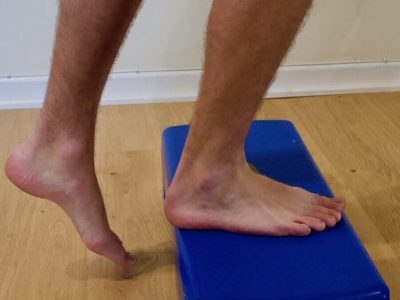
At this stage you can now add in some more standing exercises using a step
1. Step ups- Stand facing the stairs. Place your operated leg on the bottom step. Hold onto the banister and try and lift you weight up on the operated leg and place your other foot on the bottom step. Lower the good foot back down to the floor.
Repeat 10 times.
2. Step downs- This is a much more difficult exercise than step ups.
Stand on the bottom step facing down the stairs. Hold onto the handrail. Try and lower your good leg to the floor as far as you can and then return leg back on to the first step
Repeat x 10 and build up the number
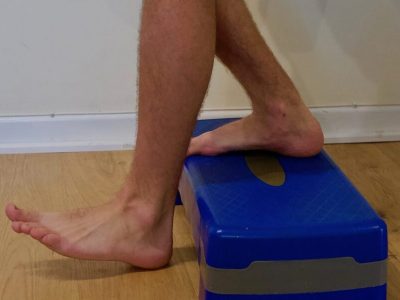
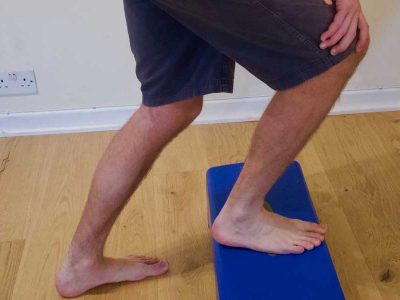
3. Knee flexion stretches
Place your foot of the operated leg up on the step holding the handrail. Keep your other leg straight and lean forward so that your knee bends more.
Lean forward until you feel a good stretch, hold for 2-3 seconds.
Repeat x 10
4. Single leg balance
Hold onto something solid if you need to.
Put full weight onto the new knee and try and lift your good leg off the floor.
Hold for 5-10 seconds. Repeat x5 each side Build up by increasing length of hold.
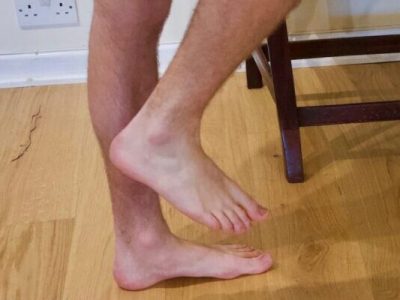
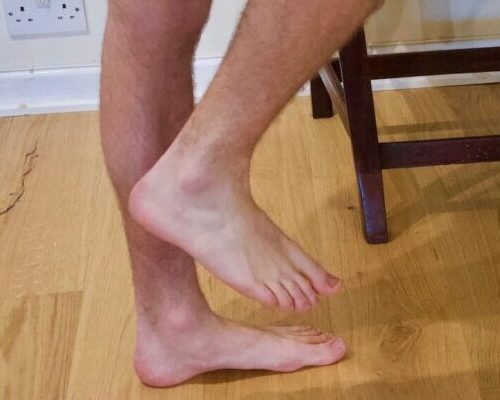
5. Marching on the spot
This is good for regaining your co-ordination for walking normally.
Think about the timing and stay on each foot the same time
Do x 20
Week 4
The knee should be beginning to move more freely and feel less stiff by now. You may have stopped using crutches or sticks around the house, but will probably still need crutches or sticks outside.
You can now add in other strengthening exercises and balance work
Static bike
Use a static bicycle if you have one. Make sure that the seat is low enough that you can mount comfortably and high enough that you stand the best chance of managing to pedal.
First move the pedal forwards or back until the knee cannot bend any further, reverse direction, do this for a few minutes as a warmup.
If after the warmup you still cannot pedal correctly continue with the rocking motion pushing to end of range and holding for a few seconds.
Rock or pedal for 5-10 minutes three times a day.
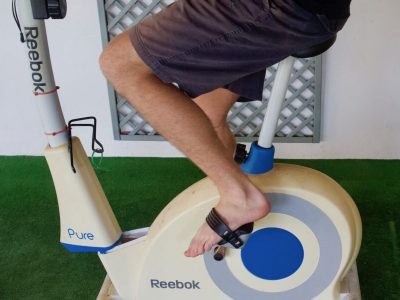
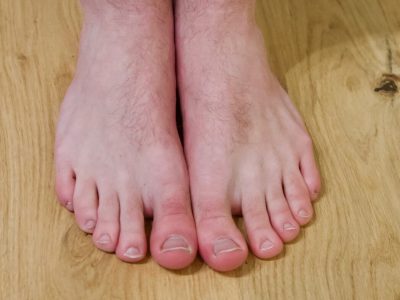
Balancing with feet together
Stand where you can hold onto something solid if needed.
Place both feet together. Slowly let go with one hand, and then as you feel balanced let go with the other hand. Hold for a few secs then repeat x5
When you find this exercise too easy, try it with your eyes closed.
Balancing one foot in front of the other
Stand where you can hold onto something solid. Place the heel of your TKR leg just in front of the toes of your other leg.
Slowly let go with one hand, and then the other.
Hold for 10-15 seconds, repeat 10 times.
Once you find this exercise easy, do it with your eyes shut.
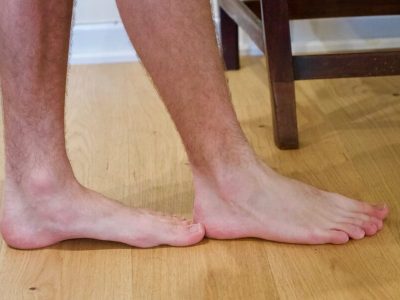
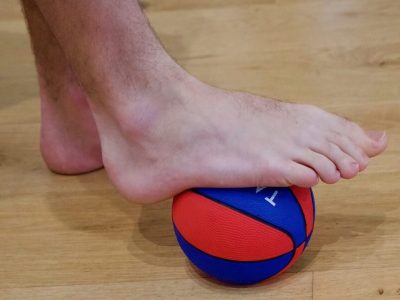
Sitting with a ball under your foot
Sit in a chair with a small football under your operated foot.
Roll the ball forwards and backwards to warm up.
Then roll the ball back as far as possible, hold for a few seconds, then roll forwards.
Repeat 10-15 times.
Then roll the ball in small circles progressing to larger circles x10 each direction
Inner thigh strengthening
Sitting in the chair, place the ball between your knees. Squeeze your knees together to squash the ball as hard as you can .
Hold for 5-10 seconds, then relax x 10
Then go up and down onto tiptoes while gripping the ball hard.
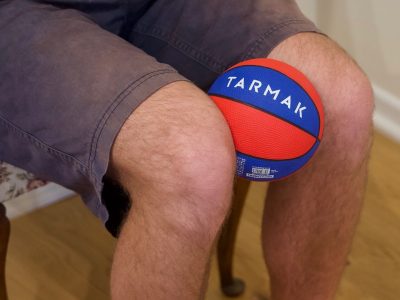
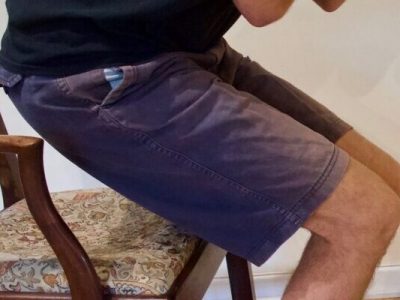
Sit to stand
Start by sitting on something high like a kitchen stool and progress to a low chair when you are able
Lean forwards and stand up without using your arms.
If this is impossible then use the arms but try and sit down as far as possible without using the arms.
Repeat x 10 and built up to 20
Sit to stand with ball between your knees
Grip the ball hard and go up and down x 10
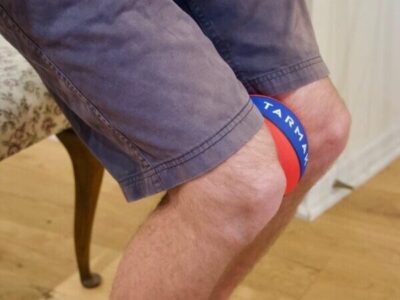
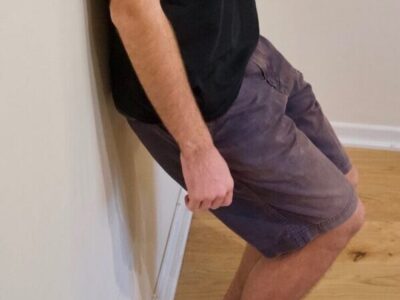
Wall slides
Keep your bottom and back against the wall. Slide down as far as you can comfortably and safely but never past 90 degrees.
Repeat x 10 and build up to 20
Slide down the wall with a Ball
Grip the ball hard between your knees and slide down the wall
Repeat 10-20 times
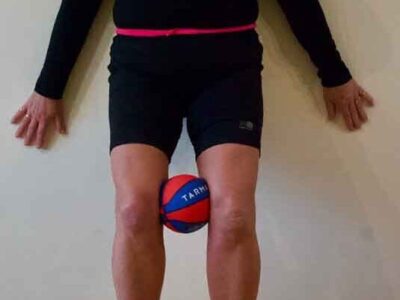
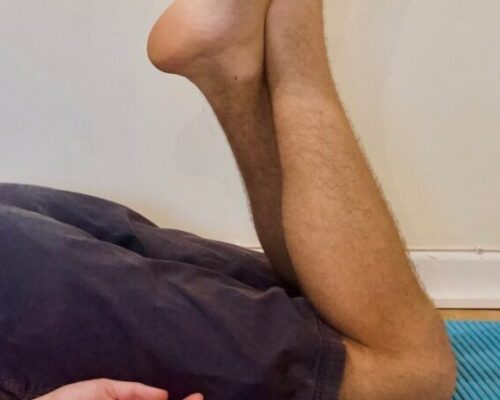
Knee bending in prone
Not everyone can lie on your tummy but if you can you can use the other leg to try and push the knee further.
Ease into the stiffness pushing gently with your good leg.
Single calf raise
Lift the good leg off the floor and then go up onto tiptoe on the bad leg x 10
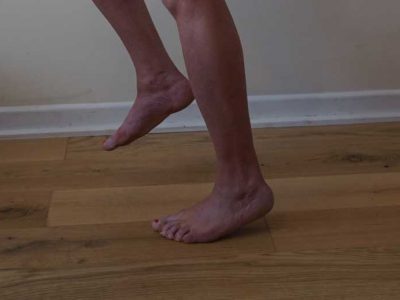
It is also very important to do some balance exercises to make sure you walk safely.
See Balance exercises
Hydrotherapy
Therapy in the water is a fantastic way to start your rehabilitation. If you have access to a physiotherapy unit with hydrotherapy or a pool where you can go with an easy ramp to get in and out then follow the exercises in the link here.
Video of knee exercises in water suitable for post knee surgery.
Also see the hydrotherapy section on this site for individual exercises.
Knee- Early Hydrotherapy exercises
Check with the doctor when you can start and you will need a waterproof dressing for your wound until it has completely healed. If you cannot swim or you are not a confident swimmer there are still many exercises you can perform in the shallow end.
How long you exercise will be dependent on the temperature of the water and your exercise tolerance. The exercises should be done in water between waist and chest height- some exercises are harder in deep water and other harder in shallow water as the water give you buoyancy.
Continue with the exercises you find most beneficial. It is important to continue some form of exercise to get the most out your new knee.
This can be swimming, walking, or cycling. You may also return to the gym, but it is important to get a personalised program developed by someone who understands the limitations of your new knee.
You should also feel confident and have enough stamina to go around the shops or supermarket, though standing still for any length of time the knee may still feel stiff and uncomfortable.
Walking outdoors, we suggest you still use 2 sticks but if you have no limp and good balance you may use one stick only.
You should be able to return to most daily activities such as cooking and cleaning and if you have a sedentary job you may be able to return to work.
It is important to continue with the exercises until all the stiffness has gone and the knee moves freely.
If you wish to progress the exercises this can be done by increasing the number you do of each exercise.
Or look at the list of more advance knee exercises here on this site
Knee exercises with a Theraband
At your 6 week clinic appointment you should have been given permission to drive again if you wish to, and may be able to walk without sticks.
3 – 6 months
If you have continued with the balance exercises you should now be able to do them without holding on.
You should be able to do all activities of daily living without restrictions, including climbing stairs normally.
You can continue with the exercises that you find most beneficial but with less intensity.
Hopefully you are now able to return to sports such as golf, gentle tennis or badminton.
Avoid high impact sports that include running and jumping and contact sports.
If you enjoy activities such as bowls, gardening and dancing you will hopefully find that you are now pain free and strong enough to start these again.
Whilst you go ahead and forget you have a new knee by using it normally remember your knee will go on improving over the next 6-18 months as you further develop exercise tolerance.
Downloadable PDF of most of the knee exercises

